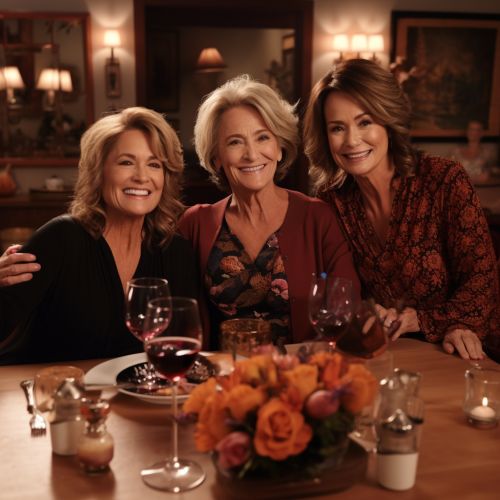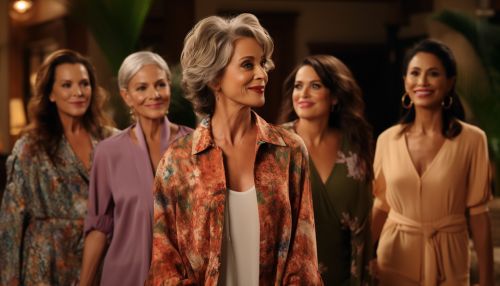Mature Women in Popular Culture
Introduction
Mature women in popular culture refer to the representation and portrayal of women aged 40 and above in various forms of media, including television, film, literature, and advertising. This demographic is often characterized by their life experiences, wisdom, and the unique challenges they face in society. The depiction of mature women in popular culture has evolved over time, reflecting societal changes in attitudes towards aging and gender roles.
Historical Context
The representation of mature women in popular culture has its roots in early forms of media. In the early 20th century, mature women were often portrayed as nurturing figures or as the matriarch of the family. These roles were largely influenced by societal norms of the time, which emphasized the woman's role as a caregiver and homemaker. However, these portrayals often lacked depth and complexity, reducing mature women to one-dimensional characters.
In the mid-20th century, the portrayal of mature women began to evolve. Influenced by the women's liberation movement, media began to depict mature women as independent, strong, and capable individuals. This shift was reflected in popular television shows of the time, such as "The Mary Tyler Moore Show" and "Maude," which featured mature women in leading roles.
Representation in Television
Television has played a significant role in shaping the representation of mature women in popular culture. In the late 20th and early 21st centuries, television shows began to feature more diverse and complex portrayals of mature women. Shows like "The Golden Girls," "Murphy Brown," and "Grace and Frankie" have been lauded for their portrayal of mature women as independent, complex, and sexually active individuals.


In recent years, television has continued to push the boundaries of how mature women are portrayed. Shows like "The Good Wife," "Madam Secretary," and "Orange is the New Black" have depicted mature women in positions of power, challenging traditional gender roles and stereotypes.
Representation in Film
The film industry has also played a significant role in shaping the representation of mature women in popular culture. However, the portrayal of mature women in film has often been criticized for its lack of diversity and depth. According to a study by the Annenberg School for Communication and Journalism, only a small percentage of films feature mature women in leading roles.
Despite these challenges, there have been notable exceptions. Films like "The Queen," "Julie & Julia," and "The Iron Lady" have been praised for their complex and nuanced portrayals of mature women. These films have also been successful at the box office, challenging the notion that films featuring mature women are not commercially viable.
Representation in Literature
Literature has often been a medium where mature women are portrayed in a more complex and nuanced manner. Novels like "The Secret Life of Bees" by Sue Monk Kidd and "Olive Kitteridge" by Elizabeth Strout feature mature women as their protagonists, exploring their inner lives and experiences in a deep and meaningful way.
In recent years, there has been a surge in literature featuring mature women. This trend has been attributed to the growing number of female authors and the increasing demand for diverse and relatable characters.
Representation in Advertising
The representation of mature women in advertising has often been a subject of controversy. Advertisers have been criticized for their portrayal of mature women as out of touch, unattractive, or overly focused on anti-aging products. This has led to calls for more diverse and realistic portrayals of mature women in advertising.
In response to these criticisms, some advertisers have begun to feature more diverse and positive portrayals of mature women. These campaigns have been praised for their authenticity and for challenging stereotypes about aging.
Impact on Society
The representation of mature women in popular culture has a significant impact on societal perceptions of aging and gender roles. Positive and diverse portrayals of mature women can challenge stereotypes, promote positive aging, and empower mature women. Conversely, negative or stereotypical portrayals can reinforce harmful stereotypes and contribute to ageism and sexism.
Future Trends
The representation of mature women in popular culture is likely to continue evolving in the future. As society becomes more aware of the need for diversity and representation, it is likely that we will see more complex and diverse portrayals of mature women in all forms of media.
